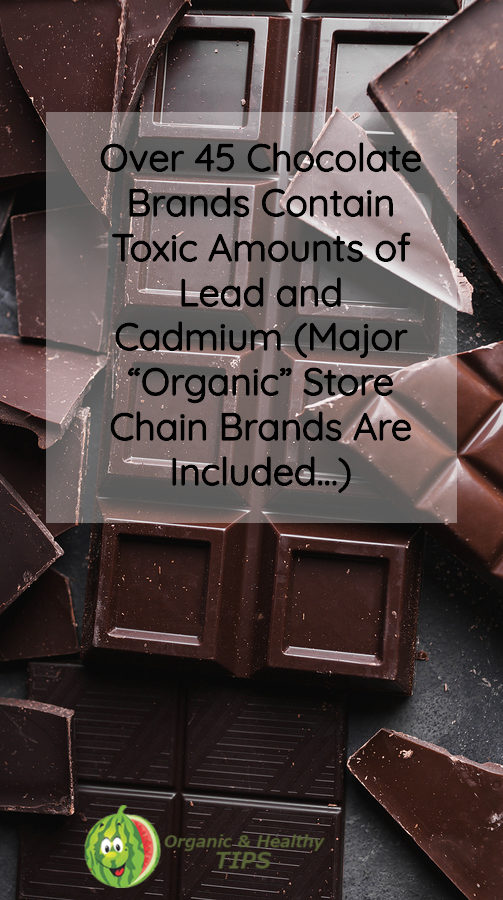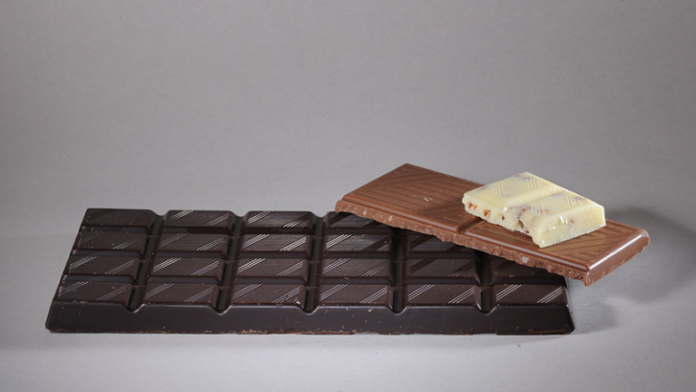Chocolate is hard to hate. While it is true that 10% of the population does not particularly like it, the rest love it so much that the average American eats 12 pounds of chocolate a year, and a European eats 15 pounds. Every single day, 1 billion people enjoy a chocolate treat – many not just for the taste but the health benefits.
When eaten in moderation and in its purest form, chocolate is full of antioxidants; it reduces blood pressure and keeps cholesterol low. It can help you lose weight by decreasing your appetite, and it increases serotonin and dopamine – chemicals in the brain that make us happy.
Unfortunately, chocolate is not so easy to find pure anymore, and recent lab results have shown surprisingly high levels of toxic heavy metals in some of the world’s most prestigious brands. If you want to avoid this nasty surprise in your next chocolate bar, make sure you know what you’re buying before your next purchase.
Sources and Negative Health Effects of Lead and Cadmium
Recently, a study by As You Sow found levels of cadmium and lead, two toxic heavy metals, in 45 of 70 chocolate bar samples (including some organic brands) at levels higher than what is considered to be safe in drinking water (scroll down to see the full list of brands tested to be high in these metals).
Both lead and cadmium are toxic metals that are unhealthy even at the lowest of doses (even though the World Health Organization (WHO) permits 0.3 mcg of lead per gram of cocoa).
Lead is found in many places in our environment: air and drinking water, soil, dust, paint, cosmetics, contaminated herbal products from China, children’s toys, jewelry, ceramics, imported canned food, and many other sources (including chocolate).
Chronic exposure to this metal leads to anemia, weakness, kidney damage, and even brain damage. Its presence in our environments may be one of the causes for the rising numbers of dementia, autoimmune diseases, kidney problems, and cardiovascular disorders.
Children are most at risk due to their still developing and growing bodies and sensitive nervous systems. Lead can alter their brains and damage many organs. It can put them at risk for lower IQ, behavior problems, hyperactivity, and slowed growth.
Cadmium is not much better but less common in the environment.
Its sources of exposure are mainly cigarette smoking, some work environments, and certain foods, according to the Central of Disease Control (CDC).
Chronic exposure to cadmium can create serious problems in kidneys, bones and lungs; leading to osteoporosis, heart disease, and potentially even cancers.
“We are getting [lead and cadmium] from multiple source. The problem with those toxic heavy metals is they accumulate in the body. It’s terrible for adults, but especially for children,” said Eleanne Van Vliet, director of toxic chemicals research.
It is easy to see how these metals should be avoided…even if that means forgetting your favorite chocolate brands.

Why Lead and Cadmium is in Chocolate
So why do many chocolate brands contain lead and cadmium? Contamination.
Manufacturers claim that both are absorbed by the cacao plant in trace amounts and come from naturally-occurring sources.
Lead exists in the Earth’s crust, but being natural does not stop it from being toxic to humans (and animals). Cadmium also exists in nature as cadmium sulfide.
Today’s world is especially contaminated by both because of fossil fuels and industrialization, as well as mining and smelting; and both are now found in soil, air, water, and our homes.
Some plants absorb them more than others. Cadmium is often taken up by grains (especially rice), potatoes, and some vegetables. Lead is most likely found in leafy vegetables such as lettuce and root crops such as carrots.
Neither metal is highly absorbed by the cocoa beans. And yet cocoa products contain one of the highest amounts of lead, and a high amount of cadmium.
This shows us that the source of contamination, despite what manufacturers say, is unlikely to be from natural contamination from the soil. And there is research to back this up.
A research article in Environmental Health Perspectives looked at the studies done by American, Nigerian, British, and Australian researchers, and concluded that only a small part of the contamination is coming from the soil. The majority of lead and cadmium contamination occurs during the shipping and processing of cocoa products.
A study by As You Sow, an environmental and social advocacy organization, found that lead and cadmium contaminates chocolate through the following routes:
- Soil contamination due to man-made pollution
- Direct application of pesticides (lead and cadmium), fertilizers (cadmium) and sewage sludge disposal (lead and cadmium)
- Processing: fermentation, drying the beans, manufacturing (drying, refining, cinching), shipping, handing, packaging
“Lead contamination in (chocolate) products occurs after the beans are harvested and dried, during the shipping of those beans and/or the manufacturing of cocoa and chocolate products,” research shows.







